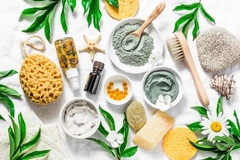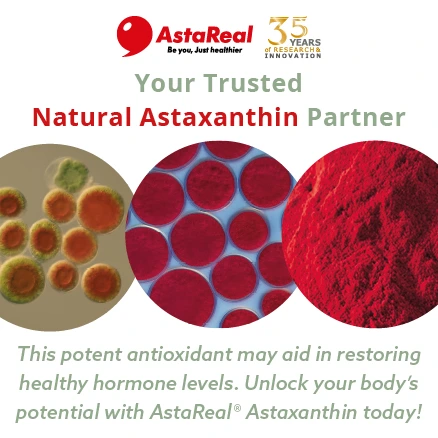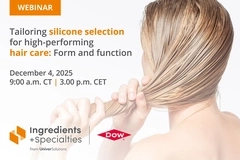EcoBeautyScore warns vague sustainability claims drive mistrust in cosmetics industry
Key takeaways
- EcoBeautyScore offers a science-based tool to replace vague “green” claims with measurable impact data.
- The platform makes life cycle assessments accessible to personal care brands of all sizes.
- It supports brands in choosing ingredients and formulations that reduce environmental footprints rather than relying on perception-based “natural” claims.
Cosmetics’ environmental impact is gaining increased attention, and sustainability tools that were previously only available to large companies are now being democratized. Life cycle assessments and product impact data are becoming more sought after and, therefore, more accessible.
“In today’s beauty landscape, transparency, and traceability are no longer optional — they’re consumer expectations. People want to know what’s in their products, where ingredients come from, and how they affect the planet,” Laurent Gilbert, scientific director at EcoBeautyScore, tells Personal Care Insights.
He says this shift has been driven by years of vague “green” claims such as “eco” or “planet-friendly,” which have created confusion and mistrust.
EcoBeautyScore addresses this challenge by providing a science-based, third-party-reviewed methodology for measuring and communicating cosmetics’ environmental impact.
“By offering a common framework, we enable brands to assess, reduce, and report their product impacts consistently — while giving consumers clarity and confidence in their choices,” he says.
Empowering positive change
Reducing carbon emissions is a critical priority from an industry perspective, but Gilbert believes it’s only part of the picture.
“In cosmetics, nature itself is equally important. Many products depend on natural ingredients, which protect biodiversity, ensure responsible sourcing, and prevent deforestation, which are central to long-term sustainability.”
 Reducing carbon emissions is a critical priority, but only a part of the picture, says Gilbert.He adds that another key consideration under the umbrella of nature is water, both in terms of water used in formulations and during the consumer use phase of a product, such as rinse-off personal care. At the end of life, once a product is rinsed down the drain, it may impact water ecosystems.
Reducing carbon emissions is a critical priority, but only a part of the picture, says Gilbert.He adds that another key consideration under the umbrella of nature is water, both in terms of water used in formulations and during the consumer use phase of a product, such as rinse-off personal care. At the end of life, once a product is rinsed down the drain, it may impact water ecosystems.
“A holistic approach that addresses climate, nature, and water is therefore essential for the industry’s future,” says Gilbert.
He explains that historically, only large beauty brands with in-house specialists and significant budgets had access to science-based insights, such as life cycle assessments, to identify their products’ environmental hotspots.
“We believe this knowledge should be available to all. Through the EcoBeautyScore platform, we aim to democratize access to product impact data and insights across the industry. Our pricing model is scaled to company size, making the platform affordable and accessible to small, medium, and large enterprises alike.”
Gilbert argues that smaller and independent brands benefit from the collective expertise of larger players, as EcoBeautyScore consolidates this knowledge into a standardized measurement and scoring framework.
“Importantly, brands don’t need to be sustainability experts to get started. The platform is designed for usability at all levels and is supported by onboarding tools and dedicated guidance where needed.”
“Our goal is simple: to make sustainability insights practical, actionable, and inclusive — empowering every beauty brand, from global leaders to emerging start-ups, to drive positive environmental change.”
Natural but misleading
Another key approach to developing sustainable beauty products lies in using bio-based ingredients, stresses EcoBeautyScore.
Biodegradable cosmetics are emerging as a solution to changing and stricter regulations, leading the industry to adapt. Commonly used beauty ingredients are leaving an environmental footprint, and since consumers do not want to trade off on performance, they seek planet-friendly, effective products.
Consumers are increasingly inclined to seek products from natural sources rather than synthetic ones. Natural ingredients are increasingly challenging petro-based solutions across all sectors of the personal care industry.
However, Personal Care Insights previously reported on the environmental impact of natural cosmetics and how natural does not always equal sustainable due to its high resource needs.
“While often perceived as inherently sustainable, ‘natural’ does not automatically mean less impactful to the environment. If an ingredient contributes to deforestation, biodiversity loss, or is not produced regeneratively, it cannot be considered sustainable,” says Gilbert.
An expert from Levur previously told us: “Labeling a cosmetic as natural or plant-based often implies it’s eco-friendly, but this can be a form of greenwashing if the product’s life cycle isn’t sustainable. Many brands play up buzzwords like ‘natural, organic, chemical-free, or eco-friendly’ without proof of real environmental benefits.”
Need for assessment
Gilbert stresses the need for life cycle assessments, which capture the full environmental footprint of ingredients from sourcing to end-of-life. “EcoBeautyScore helps brands navigate these complexities, comparing natural and synthetic options and identifying the choices that genuinely lower environmental impact.”
 Life cycle assessments capture the full environmental footprint of ingredients from sourcing to end-of-life.He says today’s most sought-after sustainable ingredients combine performance with a lower environmental footprint — whether through renewable sourcing, upcycling, or biodegradability.
Life cycle assessments capture the full environmental footprint of ingredients from sourcing to end-of-life.He says today’s most sought-after sustainable ingredients combine performance with a lower environmental footprint — whether through renewable sourcing, upcycling, or biodegradability.
“The EcoBeautyScore platform supports product developers in evaluating these choices during the design phase by modeling different ingredient combinations and their resulting footprint and score,” says Gilbert.
“Through detailed life cycle assessment insights, developers can see the environmental impact of ingredients not only at the sourcing and production stage but also at the end of life, which can be a major contributor to the overall footprint for certain ingredients and products. This enables brands to identify and prioritize ingredients that genuinely advance sustainability goals, rather than relying on perception alone.”
EcoScoreBeauty aims to help reshape how environmental information is communicated in the beauty and personal care industry. It aims to help consumers make more informed choices by providing a clear, consistent way to understand and compare the environmental impact of their products across brands and product categories.
“We also want to equip brands with insights grounded in science about their products’ environmental hotspots. Only by working together with the industry can we hope to drive real progress,” Gilbert concludes.














